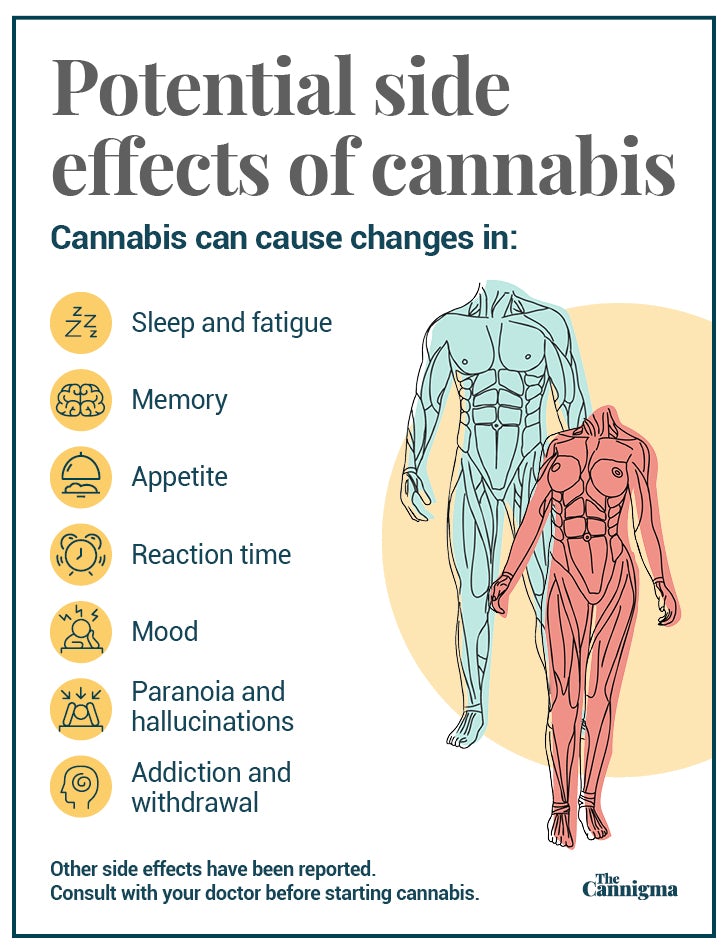Overview
Cannabis is an increasingly popular therapeutic option for people living with spinal cord injury. Indeed, many sufferers report significant reductions in pain and muscle spasticity, the two main symptoms of this debilitating condition.
Recent research reveals that the effectiveness of cannabis in spinal cord injury management may be due to its interaction with the body’s endocannabinoid system (ECS).
This system plays an important role in the healthy function of the spinal cord and may act as a protective mechanism after spinal cord injury.
What’s the link between the ECS and spinal cord injury? Is there any evidence that cannabis can ease its symptoms and even enhance recovery? Here’s what the research says.
How Cannabis Works on Spinal Cord Injury
The endocannabinoid system exists in all vertebrates and helps regulate crucial functions such as sleep, pain, and appetite. The human body produces its own cannabinoids, which modulate and activate its various functions, but as its name suggests, the endocannabinoid system can also be modulated and activated by cannabinoids found in the cannabis plant. Because the entire system was only discovered in the past 30 years, scientists still have much to learn about the myriad ways cannabis affects the human body.
This system is present throughout the human body, including the central nervous system (CNS). The spinal cord is a significant component of the CNS, and contains a high concentration of CB1 receptors alongside a smaller number of CB2 receptors.
Research indicates that the endocannabinoid system plays an important role in the normal function of the spinal cord, including the control of reflexes (such as pulling your finger away from heat) and pain.
Studies also show that spinal cord injury is followed by an increase in the levels of 2-AG and anandamide — the two main endocannabinoids — around the injury site in rats. Similar increases occur with CB1 and CB2 receptors.
Researchers have also demonstrated that blocking the cannabinoid receptors after spinal cord injury in mice results in poorer recovery; others have found that administering a synthetic form of the endocannabinoid 2-AG improves recovery following brain injury in mice.
These findings suggest that after an injury to the spinal cord and the brain, the endocannabinoid system acts as a defense mechanism against further damage.
As such, there is promise in using cannabis to not only ease spinal cord injury symptoms such as pain but directly improve recovery.
In particular, cannabis shows potential in protecting against the so-called secondary damage of spinal cord injury, caused by inflammation, oxidative stress, and excitotoxicity.
Whereas the immediate damage is unavoidable, this secondary damage, which starts minutes after the primary spinal cord injury and can last for several weeks, may respond well to cannabis treatment.
Medical Studies on Spinal Cord Injury and Cannabis
Although there hasn’t been a lot of research looking at cannabis and spinal cord injury, the current findings are promising, suggesting that it can relieve pain, muscle spasticity, and other symptoms.
A 2003 study looked at the benefits of cannabis extract in people with spinal cord injury and related nerve damage issues such as multiple sclerosis and brachial plexus injury. Compared to placebo, cannabis produced significant pain relief, an improvement in bladder control, and decreased muscle spasms and spasticity, with minor side effects. Indeed, cannabis is medically approved for spasticity and chronic pain.
A 2007 study examined the effects of THC on spasticity caused by spinal cord injury. Compared to placebo treatment, THC reduced the spasticity sum score, a measure of spasticity severity, from an average of 16.7 to 8.9. The researchers concluded that “THC is an effective and safe drug in the treatment of spasticity.”
Meanwhile, a 2016 study looked at the benefits of vaporized cannabis in people with neuropathic pain caused by spinal cord injury and disease. Compared to placebo, people who vaped cannabis with 2.9% or 6.7% THC experienced significant pain relief.
Additionally, several observational studies have highlighted the popularity of cannabis for relieving the pain and spasticity caused by spinal cord injury (SCI):
- A 2018 Colorado study found that 48% of surveyed adults with SCI used cannabis to relieve spasticity and improve sleep
- A 2019 study in New Zealand examined eight people with SCI, finding that they successfully reduced their pain with cannabis when standard medication proved ineffective and caused drowsiness
Lastly, there’s evidence that cannabis can relieve symptoms of multiple sclerosis (MS), a condition characterized by nerve damage that’s similar to spinal cord injury. Cannabis is approved for the treatment of symptoms associated with MS in many areas where cannabis is prescribed medically.
One 2018 review analyzed the findings of multiple high-quality studies looking at cannabis use for easing symptoms of MS. This review found that cannabinoids were effective at reducing neuropathic pain and muscle spasticity, two symptoms also experienced by people with SCI.
In all, there’s a growing body of medical evidence that cannabis can relieve the pain and spasticity associated with SCI. However, more research is needed to see whether cannabis can also improve recovery following such injury.
Potential side effects of cannabis use
Cannabis is a relatively safe medication, but it can cause some side effects.

Human studies of cannabis use to treat symptoms of SCI have reported psychoactive side effects such as euphoria, increased anxiety, impaired memory, and difficulty paying attention, collectively known as the cannabis high. However, these effects were tolerated well by study participants and not deemed serious.
Such side effects can be further reduced by using CBD-rich cannabis preparations, since CBD is non-intoxicating and may counteract the psychotropic effects of THC, the main cannabinoid responsible for the cannabis high.
Cannabis can also cause increased heart rate, red eyes, dry mouth, sleepiness, hypotension, and dizziness. However, these effects are relatively minor.
Sign up for bi-weekly updates, packed full of cannabis education, recipes, and tips. Your inbox will love it.

 Shop
Shop Support
Support